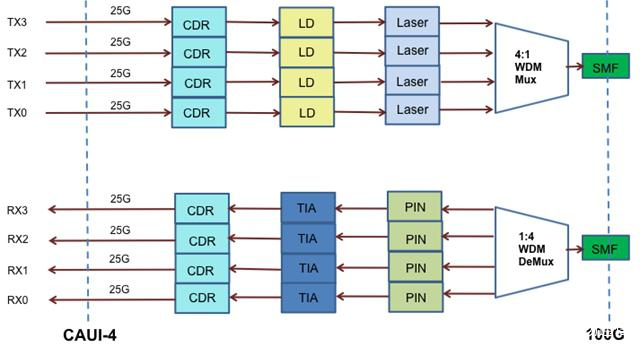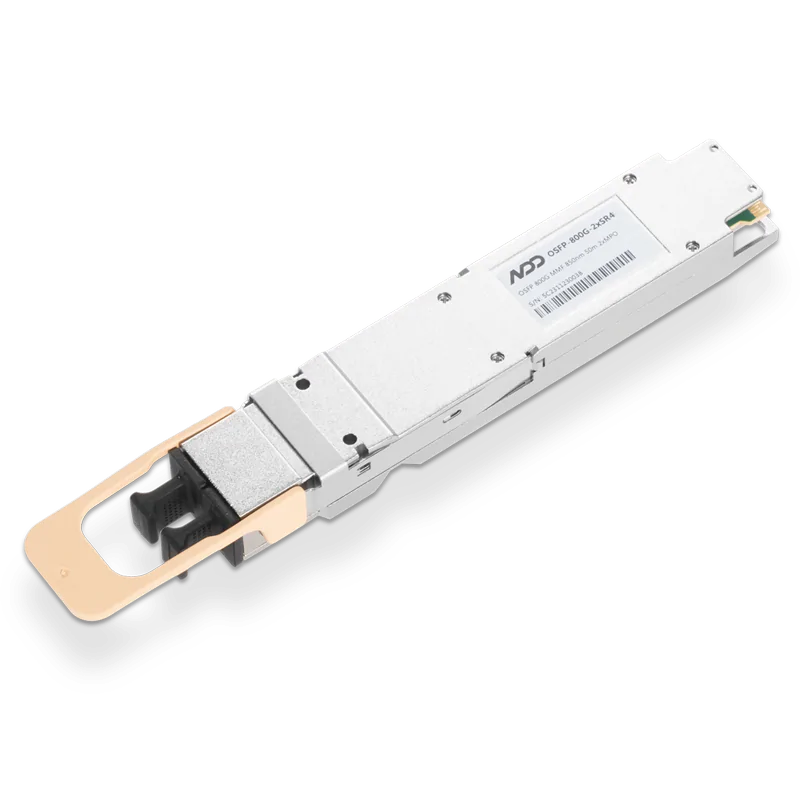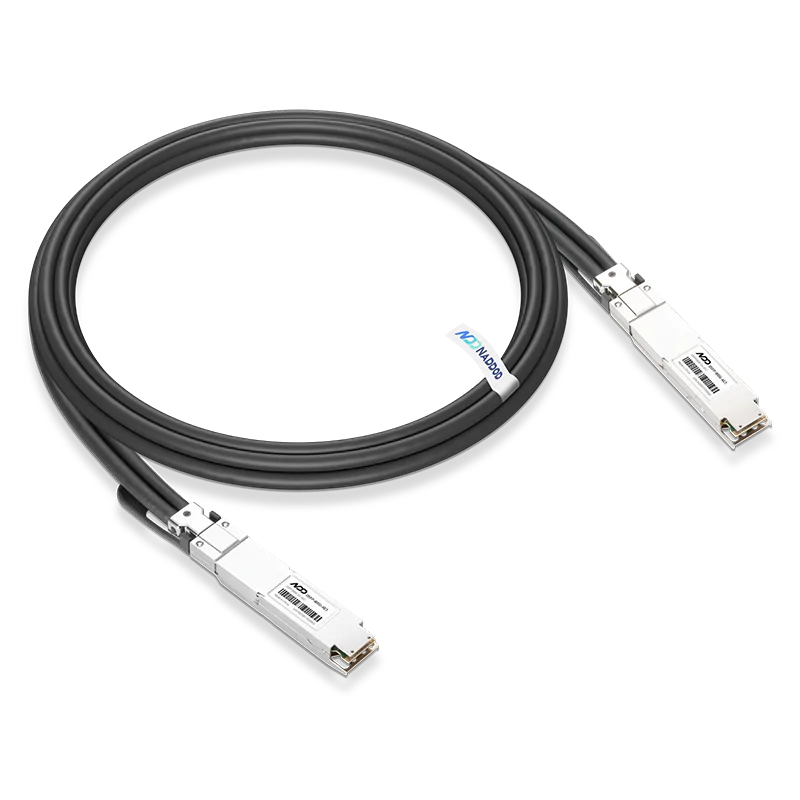With the rapid expansion of the 100G transceiver market, the demand for data transmission rate is getting higher. IEEE has developed two optical transceiver standards for 100G networks :100G QSFP28 SR4 and 100G QSFP28 LR4. The CWDM4 MSA has developed a 100G CWDM4 QSFP28 standard with a transmission distance of 2km because the length of fiber optic links is so varied that these two standards do not provide the most cost-effective way to deploy data centers.
The 100G CWDM4 QSFP28 is a standard published by CWDM4 MSA in 2014. It is a 100G transmission mode based on single-mode coarse wavelength division multiplexing (CWDM) technology. The 100G CWDM4 QSFP28 optical module that meets this standard uses a duplex LC interface, utilizing 4 central wavelengths of 1271nm, 1291nm, 1311nm and 1331nm for optical signal transmission ( see table below). Each band transmits 25G through coarse wavelength division multiplexing (CWDM) technology. The 100G CWDM4 QSFP28 optical transceiver multiplexed above four central wavelengths into a single mode fiber for transmission. Please note that in order to ensure the stability of the fiber transmission system, the 100G CWDM4 QSFP28 optical module must be used in fiber links with forward error correction (FEC) capabilities.


100G CWDM4 QSFP28 Transceiver
Application for 100G CWDM4 QSFP28:
100G CWDM4 QSFP28 can be applied to data centers for high-performance computing and storage networks with 100G CWDM4 Ethernet, InfiniBand EDR.
Form factor:
The QSFP28 100G CWDM4 optical module adopted with QSFP28 form factor for100G transmission. It provides an ideal solution for the increasing transmission rate of the current ultra-large data center. The size of the QSFP28 optical module is smaller than that of the CFP4, which brings QSFP28 optical module with higher port density.
QSFP28 100G CWDM4 DDM:
The 100G QSFP28 CWDM4 optical module has built-in digital diagnosis monitoring function, which could effectively monitor important performance parameters such as TX power, RX power, temperature, voltage, bias current, and warning information.
Cost for QSFP28 100G CWDM4:
The 100G QSFP28 CWDM4 optical module can be upgraded directly from 25G to 100G without going through 40G, greatly reducing the cost of wiring system.
Features of QSFP28 100G CWDM4:
Take NADDOD QSFP28 100G CWDM4 as an example:
Hot-swappable QSFP28 from factor
4-channel full-duplex transceiver integrated module
4 channel un-refrigerated CWDM DFB laser and PIN ROSA
Comply with QSFP28 MSA and CWDM4 MSA standards
Compatible with the InfiniBand EDR standard
Maximum speed up to 103.125Gbps
Transmission distance up to 2km through single-mode fiber (SMF) (FEC required)
The maximum power consumption is less than 3.5W
Duplex LC
Operating temperature range from 0 to 70 degrees Celsius
3.3V supply voltage
RoHS compliant (lead-free)
What are the advantages of QSFP28 100G CWDM4 compared with other 100G optical modules?
100G CWDM4 compared with 100G PSM4, has more price advantages in medium and long distance transmission in data center applications. Compared with 100G CLR4, the application field is more popular, so the demand will be larger; Compared with 100G CLR4 optical module, the price advantage is outstanding.
With the continuous growth of data traffic, the trend of large and flat data centers drives the development of optical modules in two aspects: the demand for transmission rate is upgraded, and the demand for quantity is increased. For data centers that use a large number of optical modules, low cost and transmission distance are undoubtedly the key considerations. Therefore CWDM4 has become the mainstream of 100G overseas cloud computing data centers.

 800GBASE-2xSR4 OSFP PAM4 850nm 50m MMF Module
800GBASE-2xSR4 OSFP PAM4 850nm 50m MMF Module- 1What is the Difference Between Fiber Optic and Copper Wire?
- 2Basic Knowlege You Have to Know About 25G Transceivers
- 3Can a PoE Switch Be Used as a Regular Switch?
- 4Introduction to Open-source SONiC: A Cost-Efficient and Flexible Choice for Data Center Switching
- 5OFC 2025 Recap: Key Innovations Driving Optical Networking Forward






























